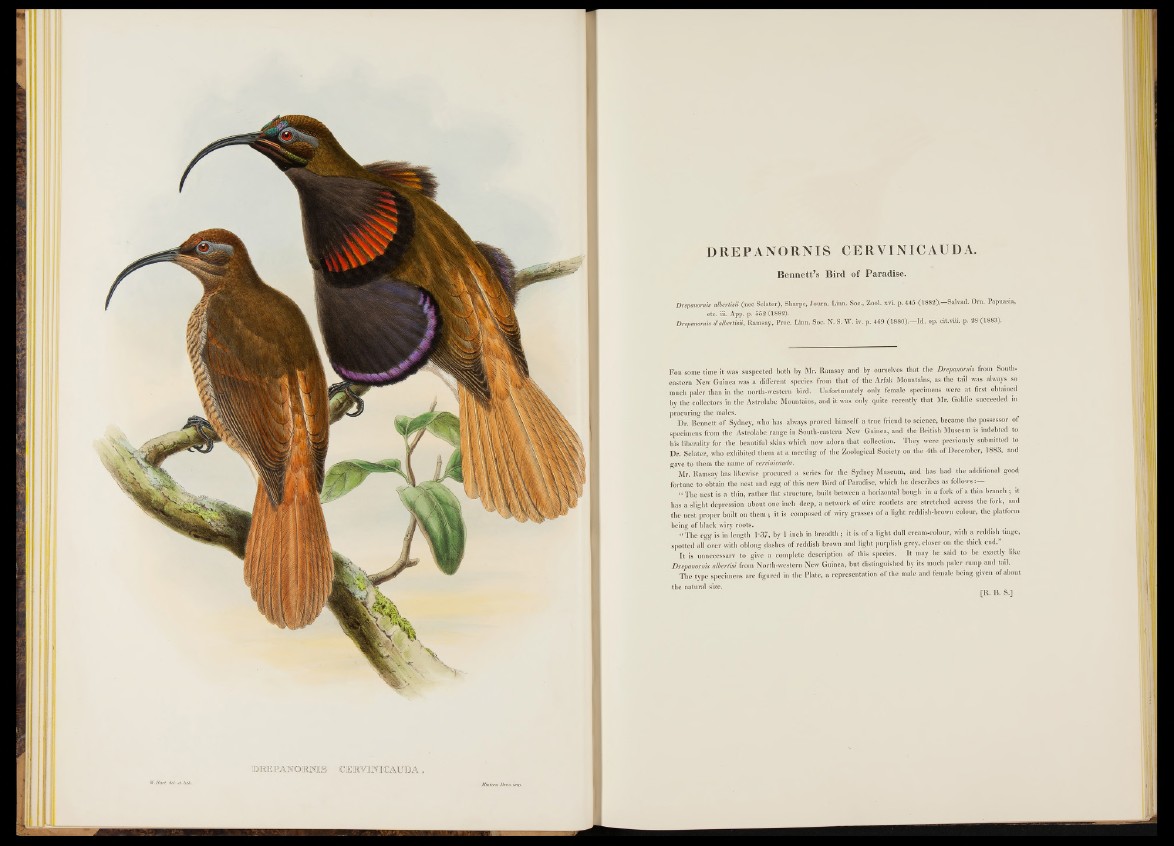
DREPANORNIS CERVINICAUDA.
Bennett’s Bird of Paradise.
Drepanomis albertisii (nec Sclater), Sharpe, Journ. Linn. Soc., Zool. xvi. p. 445 (18 8 2 ). Salvad. Orn. Papuasia,
etc. iii. App. p. 552 (1882).
Drepanomis d’albertisii, Ramsay, Proc. Linn. Soc. N. S. W. iv. p. 469 (1 8 8 0 ).— Id. op. cit.viii. p. 28 (1883).
F o e some time it was suspected both by Mr. Ramsay and by ourselves that the Drepanomis from Southeastern
New Gu|nea was a different species from that o f the Arfak Mountains, as the tail was always so
much paler than in the north-western bird. Unfortunately only female specimens were at first obtaiued
by the collectors in the Astrolabe Mountains, and it was only quite recently that Mr. Goldie succeeded in
procuring the males.
Dr. Bennett o f Sydney, who has always proved himself a true friend to science, became the possessor of
specimens from the Astrolabe range in South-eastern New Guinea, and the British Museum is indebted to
lils liberality for the beautiful skins which now adorn that collection. They were previously submitted to
Dr. Sclater, who exhibited them at a meeting o f the Zoological Society on the 4th o f December, 1883, and
gave to them the name o f cermnicauda.
Mr. Ramsay has likewise procured a series for the Sydney Museum, and has had the additional good
fortune to obtain the nest and egg o f this new Bird of Paradise, which he describes as fo llows:--
“ The nest is a thin, rather flat structure, built between a horizontal bough in a fork o f a thin branch ; it
has a slight depression about one inch deep, a network o f wire rootlets are stretched across the fork, and
the nest proper built on them ; it is composed o f wiry grasses o f d light reddish-brown colour, the platform
being o f black wiry roots.
“ The egg is in length 1-37, by 1 inch in breadth ; it is o f a light dull cream-colour, with a reddish tinge,
spotted all over with oblong dashes of reddish, brown a n d |||h t purplish grey, closer on the thick end.”
It is unnecessary to give a complete description o f this species.: It may he said to be exactly like
Drepanomis alberlisi from North-western New G u in e a ,||t distinguished by its much paler rump and tail;« .
The type specimens are figured in the Plate, a representation o f the male and female being given of about
the natural size.